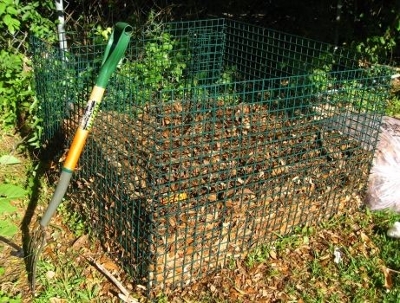 Growing stunning ornamentals and perennials or mouthwatering fruits and vegetables doesn't happen by accident. However, as I've discovered, most people focus on the end product, whether it be a lovely rose or luscious tomato when their attention should go much deeper - to the soil beneath their plants. Successful gardening begins with healthy soil and to stay healthy, soil needs a steady diet of organic matter in the form of compost.
Growing stunning ornamentals and perennials or mouthwatering fruits and vegetables doesn't happen by accident. However, as I've discovered, most people focus on the end product, whether it be a lovely rose or luscious tomato when their attention should go much deeper - to the soil beneath their plants. Successful gardening begins with healthy soil and to stay healthy, soil needs a steady diet of organic matter in the form of compost.
It has been said there is no such thing as a free lunch. Nevertheless, when it comes to feeding soil to produce a rich, healthy environment for plants and help conserve water, compost is appetizer, entree and dessert. If you've never been a compost chef, there is no better time to start than when supplies of dried leaves are most plentiful in the fall. No trees? I often make leaf forays through the neighborhood arriving home with trash bags full of leaves that were left at the curb. Of course, I'm careful to choose bags of leaves from neighbors who don't use synthetic fertilizers, herbicides or pesticide in their yards. These leaves constitute my "browns."
"Browns" are the carbon-rich ingredients that can include hay, chopped twigs and bark, and sawdust. "Greens" supply the necessary nitrogen in the mix - fresh grass clippings, vegetable kitchen scraps (including coffee grounds plus filters) and spent garden plants. Avoid meats, dairy, eggs, and weeds that have gone to seed, and cat or dog waste. The ratio of browns to greens should be roughly 3 to 1. My compost is made in a 3-cubic-foot wire bin with an open bottom, but there are many variations.
For quick composting, add alternate layers of green and browns with each layer around 4 inches thick. Or use the lazy method by combining everything together whenever they are available. Then, if you are just beginning your pile, add a shovelful of native garden soil as it will contain the starter. Native soil is teeming with tiny microbes and microorganisms that begin the task of breaking down the ingredients into dark, sweet-smelling, compost. These decomposers, which include worms and insects, are alive, so, as with every living thing, they need food (the greens and browns), water and air. Moisten the contents with water, so that the pile is damp, but not soaking wet.
Turn the whole mixture often to incorporate air. In my yard, when the composting process is finished, I lift up my bin and move it to another spot to begin the process anew. If space allows, I have a few bins working - one starting, one in mid-process and one finished, ready to use.
I've been a compost chef off and on in my gardening career, but I’ve been more serious this last year. Every other day or so, I carry to the bin a 2-quart container of up to 2 pounds of kitchen waste. In a month, this will recover approximately 30 pounds of material that would otherwise go down the garbage disposal or into the landfill. According to the EPA, yard trimmings and food scraps comprise 26 percent of waste generated in the United States, and we can turn all that into a usable, chemical-free landscaping commodity. When finished, good compost has an earthy, pleasant fragrance and looks like very dark brown soil. If it smells, it is too wet and needs more air. Fluff up the mixture and add some dry materials. If fire ants appear, it is too dry and needs mixing. Fire ants don't like to be disturbed.
Uses for compost are many: a fine layer (¼-½ inch) makes the perfect lawn dressing; add to vegetable and flower beds to make plants healthier, stronger and more resistant to pests and disease; spread around tree roots; and mix into the soil of container plants.
Being a compost connoisseur is easier than you think and what better way to start than with the Urban Harvest class, Backyard Composting and Vermiculture, Saturday, Oct. 24. If you are a garden gourmet, let your friends and neighbors hear about it. You may drive a hybrid, and if you also are a composter, you're really cool.
This article is provided by Urban Harvest, Inc. To learn about gardening classes, farmers markets, school and community gardens and more go to www.urbanharvest.org or call 713-880-5540 for more information. This article was written by Chris LaChance who is Director of Education at Urban Harvest. Contact Chris at chris@urbanharvest.org or 713-880-5540X1020.